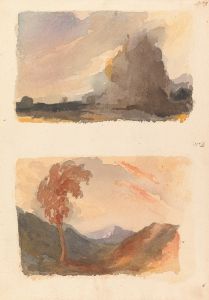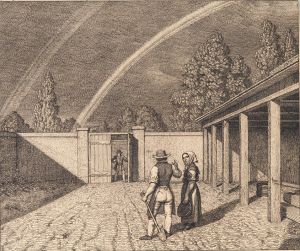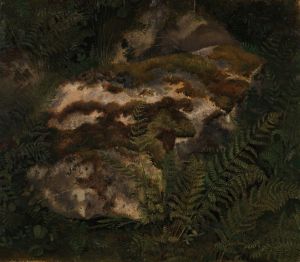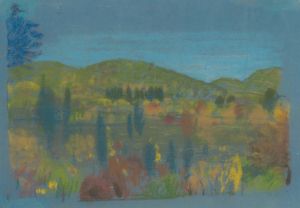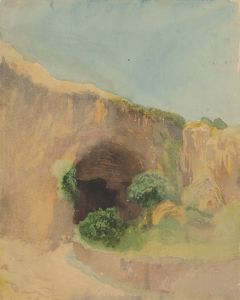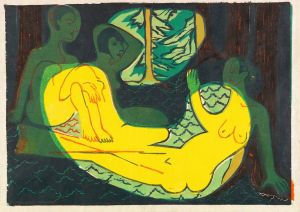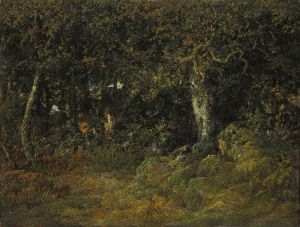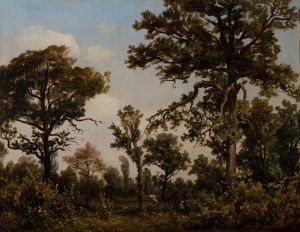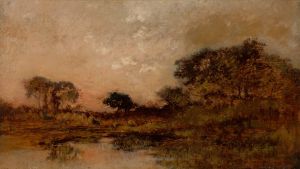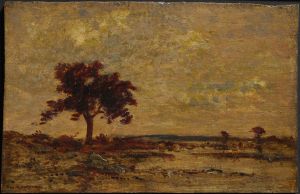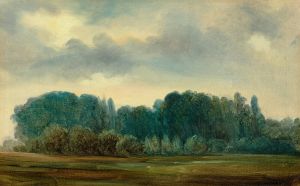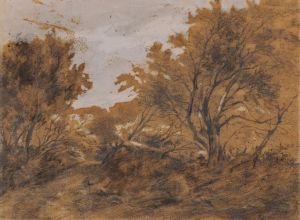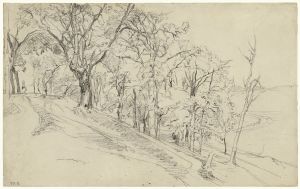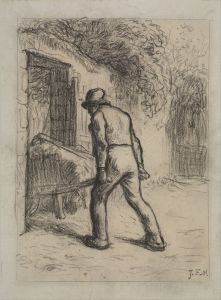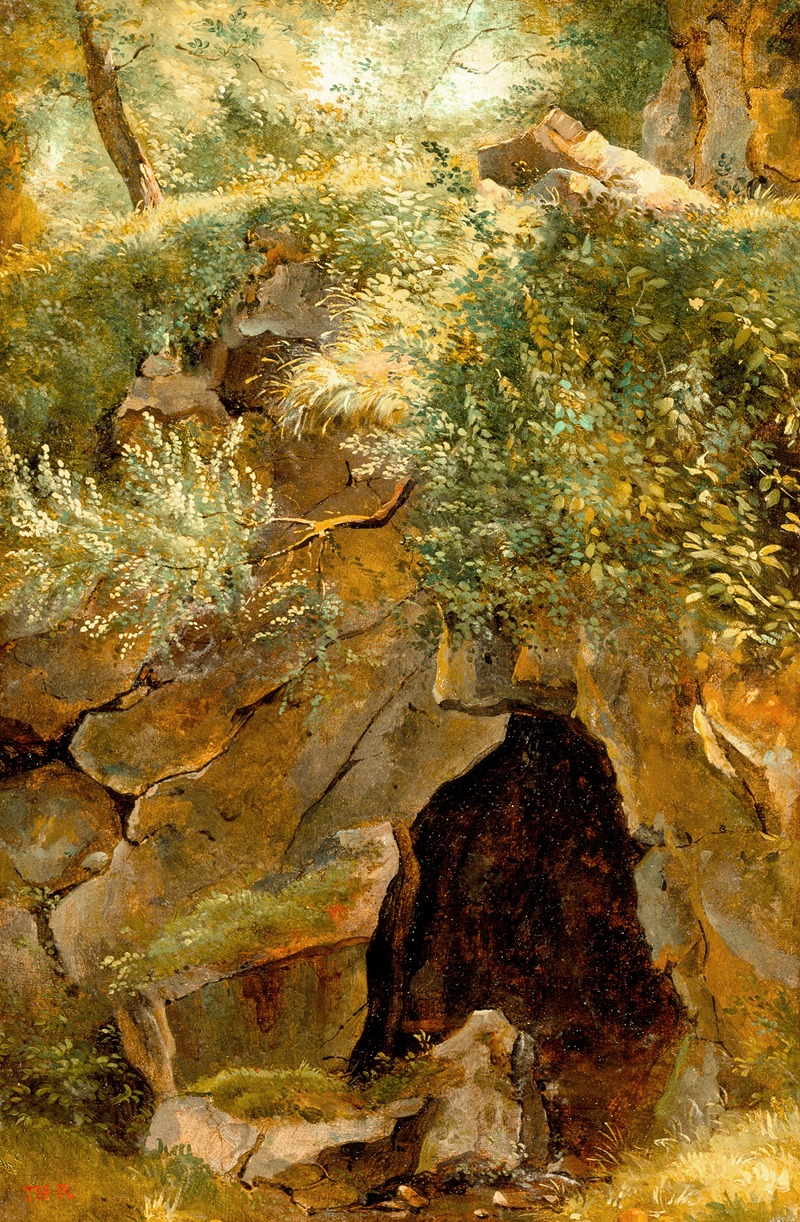
The Cave
A hand-painted replica of Théodore Rousseau’s masterpiece The Cave, meticulously crafted by professional artists to capture the true essence of the original. Each piece is created with museum-quality canvas and rare mineral pigments, carefully painted by experienced artists with delicate brushstrokes and rich, layered colors to perfectly recreate the texture of the original artwork. Unlike machine-printed reproductions, this hand-painted version brings the painting to life, infused with the artist’s emotions and skill in every stroke. Whether for personal collection or home decoration, it instantly elevates the artistic atmosphere of any space.
Théodore Rousseau, a prominent figure in the Barbizon School, is renowned for his landscape paintings that capture the essence of nature with a profound sense of realism and emotion. "The Cave" is one of his notable works, although specific details about this painting are not as widely documented as some of his other pieces. Rousseau's oeuvre primarily focuses on the natural landscapes of France, particularly the forest of Fontainebleau, which served as a significant source of inspiration for him and other artists of the Barbizon School.
Rousseau was born in Paris in 1812 and showed an early interest in art, eventually studying under the guidance of Jean-Charles-Joseph Rémond and others. He was deeply influenced by the Romantic movement and the works of earlier landscape painters such as John Constable and Jacob van Ruisdael. Rousseau's approach to painting was characterized by his dedication to plein air painting, which involved working outdoors to capture the natural light and atmosphere of the landscape.
The Barbizon School, named after the village of Barbizon near the forest of Fontainebleau, was a group of painters who sought to break away from the formalism of the academic art scene in Paris. They emphasized naturalism and the depiction of rural scenes, often focusing on the interplay of light and shadow in natural settings. Rousseau was a leading figure in this movement, and his works often reflect a deep appreciation for the tranquility and beauty of the natural world.
"The Cave" likely embodies Rousseau's typical style, which includes a meticulous attention to detail and a harmonious composition that draws the viewer into the scene. His paintings often feature a rich palette and a careful rendering of textures, whether it be the rough bark of trees or the soft foliage of the forest floor. Rousseau's ability to convey mood and atmosphere through his landscapes is one of his defining artistic achievements.
Throughout his career, Rousseau faced challenges, including initial rejection from the Paris Salon, the official art exhibition of the Académie des Beaux-Arts. However, he eventually gained recognition and acclaim, particularly after the 1848 Revolution, which led to a more liberal acceptance of diverse artistic styles. By the time of his death in 1867, Rousseau had established himself as a pivotal figure in the development of landscape painting in France.
While specific information about "The Cave" is limited, it can be appreciated within the broader context of Rousseau's work and his contributions to the Barbizon School. His legacy is evident in the way he influenced subsequent generations of artists who continued to explore the relationship between humanity and nature through their art. Rousseau's dedication to capturing the beauty of the natural world remains a significant aspect of his enduring appeal and artistic legacy.





